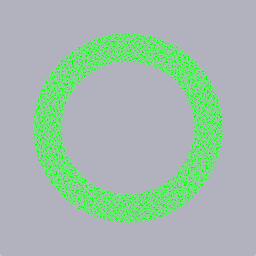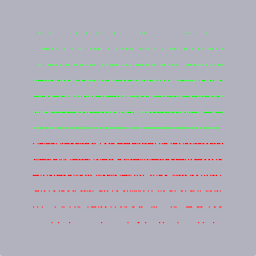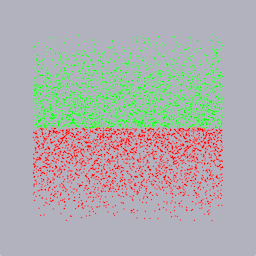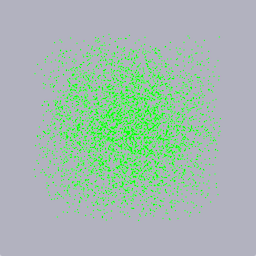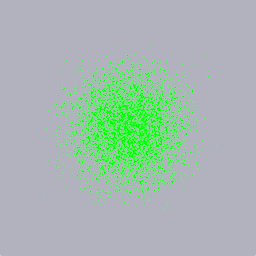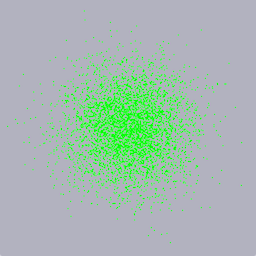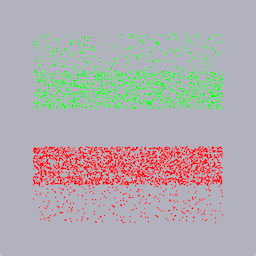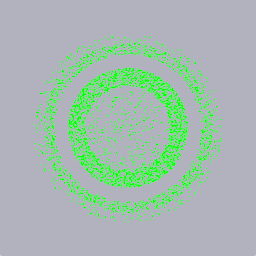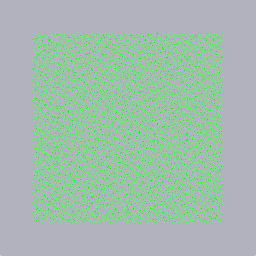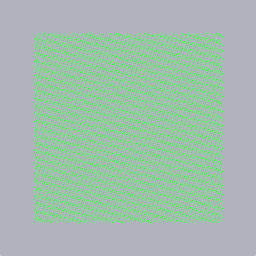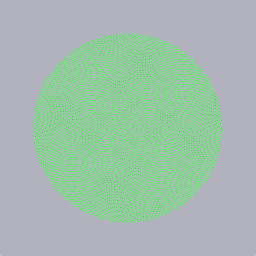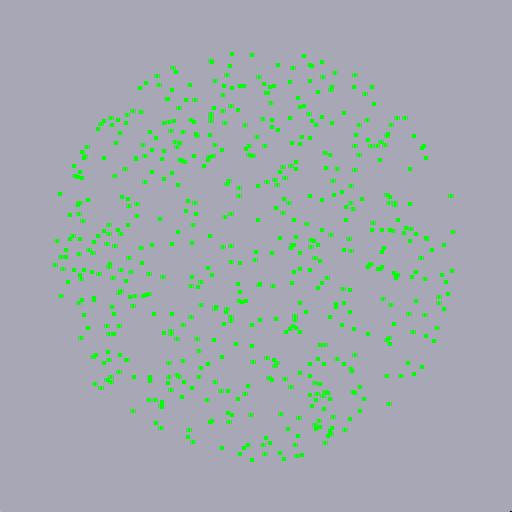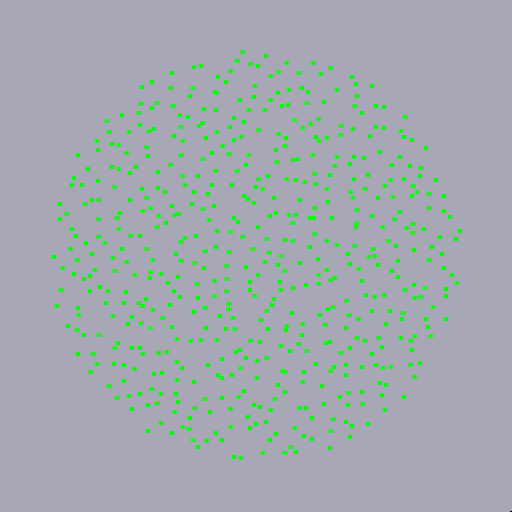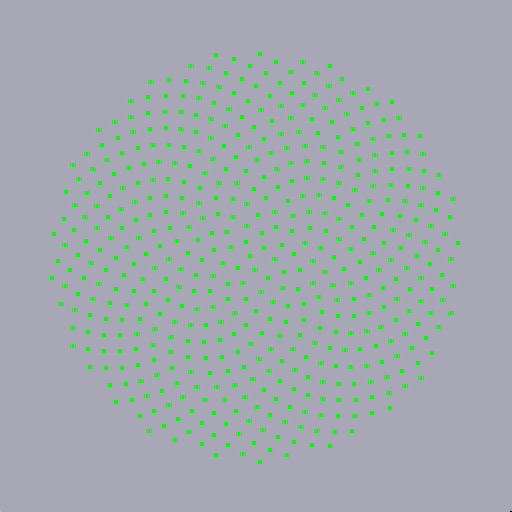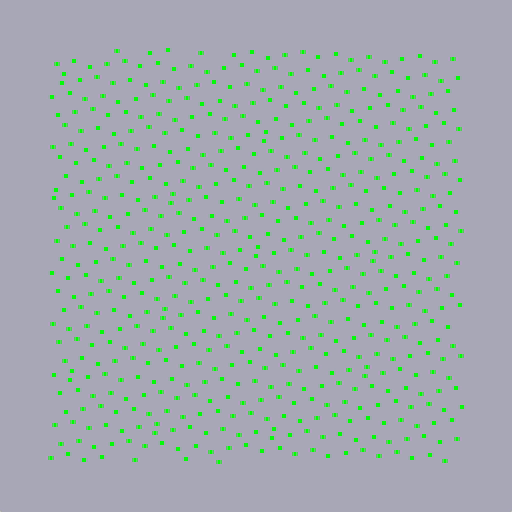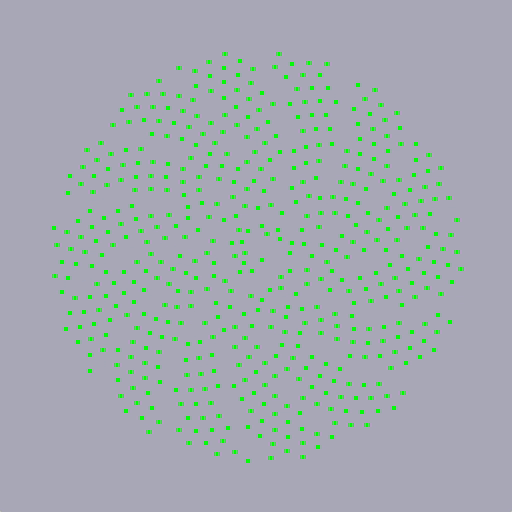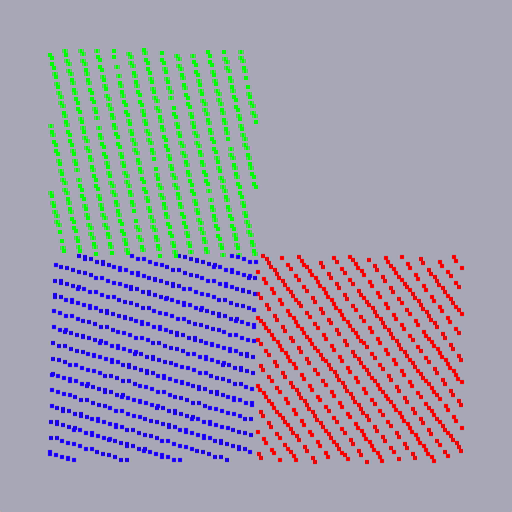A single-source-file library for converting 32-bit integer inputs into various 1D, 2D, and 3D distributions and types. The intended use is to convert the output of an RNG into various more useful forms.
Features:
- Generation of int, float, 2D and 3D samples over various shapes
- Cheap routines that only take one input number, but may be less accurate or controllable
- More accurate routines that take a full number of input samples, e.g., three for a cube
- Pre-modulation of inputs into triangular, gaussian-like, and weighted forms
- Gaussian (normal) distribution as both a cheap approximation and via full Box-Muller transform
- Optional generators supplying LCG/PCG/XorShift/Hash/Halton/Golden/'R' sequences.
To build and run the test app:
c++ --std=c++11 Distribute.cpp DistributeTest.cpp -o distribute && ./distribute 200
Or add those files to your favourite IDE.
Assuming 'rng' returns the next sample via operator uint32_t(), usage can be as simple as below, otherwise substitute rng() or whatever other syntax is appropriate for your sample generator.
1D:
float score = ToFloat(rng, 1.0f, 100.0f);
int modifier = ToInt32Signed(rng, 5);
int dayOfYear = ToInt32Inclusive(rng, 1, 365);
float weightKG = ToFloat(ModGaussLike(rng), 50.0f, 130.0f);
2D/3D:
Vec2f circleLoc = ToCircle(rng);
Vec2f pixTentSample = ToSquare(ModTriangle(rng), ModTriangle(rng));
Vec3f rayDir = ToDirection3(rng);
Warning: do not simply use rand() to feed these functions, as, in addition to its low quality, its range is not guaranteed to be a full 32 bits.
If you don't already have your own preferred RNG routines, the additional files Generate.h/cpp provide LCG, PCG, Halton, "Golden" (Spiral), and "R" generators, in a form that interoperates cleanly with Distribute.h.
-
1D: float [-1, 1], integer [-10, 10], with a simple LCG input.
-
2D: square, ring, triangle
-
Triangle Modifier: integer, float, square in both dimensions
-
Gauss-like Modifier: integer, square, and full gaussian for comparison.
-
Weighted Modifier: float and circle weighted by [1, 8, 0, 4, 1]
-
Non-random inputs: Halton 100, 1000, 5000 samples
-
Non-random inputs: Golden ratio square, circle, and sphere surface
-
Progressively adding samples from the PCG, Halton, and Golden sequences
-
Progressively adding samples from the Rd sequence: square, circle, cube
![Float [-1, 1]](https://raw.githubusercontent.com/andrewwillmott/distribute-lib/master/images/float.png)
![Integer [-10, 10]](https://raw.githubusercontent.com/andrewwillmott/distribute-lib/master/images/int.png)

